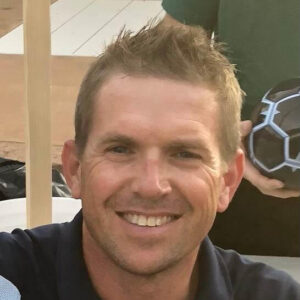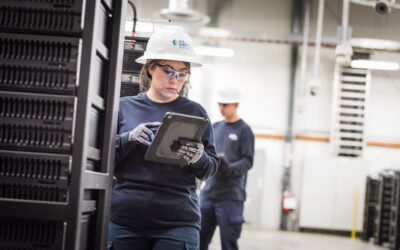Jeremy Young can remember the exact moment when he knew he wanted to get into the power industry.
He was installing floor tiles. Two of his uncles taught him the craft, and he started doing the work part-time in high school. He was installing floor tile for about six years when he found himself doing a tile job for a man who worked for Tucson Electric Power. The company provides power to more than 433,000 Tucson residents.
“As I was installing the tile, he was talking to me about his job, and I knew instantly that’s what I wanted to do for a living,” Young says.
What was it about power that attracted Young? It was a job that was outside, working in different types of environments every day. “There’s work that involves climbing towers, and I really enjoy heights,” Young says. “The job is also more than electricity. It’s factoring angles and tensions and weights, which is really interesting. And it’s a good paying job.”
We caught up with Young to learn more about how he got into the energy industry and what his job as a crew leader on a transmission/maintenance crew is like.
What kind of training brought you to your role?
I knew nothing about the electrical industry when I started. That was 15 years ago. I joined Tucson Electric Power (TEP) in the pre-apprenticeship program at the time. That was a 1.5-year program where you worked with groundmen learning what kind of equipment is used on poles and lines, preparing materials and tools for qualified workers.
Then, I entered the apprenticeship program, which consisted of eight, six-month steps, so approximately four years of total time. In this program, I learned about installing necessary equipment on poles, climbing poles or using truck-mounted buckets to reach equipment, identifying defective devices like fuses or wires, understanding safety, laying underground cables, and inspecting and testing power lines and other equipment using special reading and testing devices.
After passing this program, I became a journeyman lineworker.
So, essentially, I was being paid to work while I learned. There was some after-hours classroom time for about two hours on Tuesday and Thursday nights in addition to on-the-job training.
At the end of 2017, I became a crew leader. TEP is great at offering advancement opportunities. I’ve had a lot of opportunities to move into office work, but I really struggle with the thought of working behind a desk, so this path fits me much better.
What is your typical day like?
We work four 10-hour days. And every day is different. One day we could be working on a transmission tower and the next we could be working on an underground distribution line. Our job is basically tackling transmission maintenance needs on a day-to-day basis. This could be replacing something on an old system or improving an existing system. Our work is generated either by necessity, such as power outages or emergency situations, or through design work orders that prioritize maintenance needs, like changing out a pole or a transformer.
What’s the more rewarding part of your work?
Getting the power back on for people when they’ve lost it is 100% my favorite part of the job. We tend to take power for granted. And when you drive into a neighborhood and the power has been out for a bit and you’re able to get the lights back on, you can hear the people cheer and clap from inside. They even come out and thank us. That’s a very rewarding part of the job.
In the Southwest, we have monsoon season, and that tends to be when our need for power restoration from storms increases. Extreme heat can also impact power if there are really hot days mixed with hot nights that put more strain on transformers. The rest of the time, we’re focused on maintenance, and this maintenance is what keeps the power working and stable most of the time.
What would surprise people most about your work?
If you know anything about this industry, it isn’t surprising, but if you don’t, it might be. We work on high-voltage lines that are live. So we could be working on a 13,800-volt live wire wearing rubber gloves or even bare hand work on 500,000 volts where we have a metal suit on and become the same voltage as the line in order to work on it.
People passing by will comment about being careful or not getting shocked. What they don’t realize is this isn’t just a shock we’re facing. The current is so high, it could be lethal. This is why safety is our top priority every day. There are four or five people on a crew and each day that we’re working together, we’re on the same page and working to keep each other safe. It can be a dangerous job, but having this tight-knit, family-like environment as a crew really helps us focus on safety as our main priority.
What advice would you give to people interested in getting into a job like yours?
Today, the field can be a bit more competitive than when I started. So, while I didn’t have to go to lineworker college first, some companies highly recommend that you go into the electricity field or lineworker college to become more attractive to power companies.




